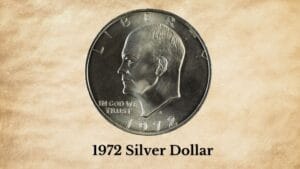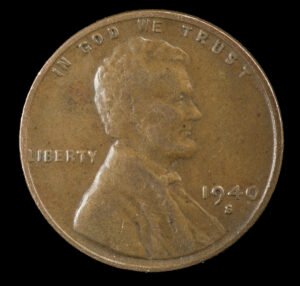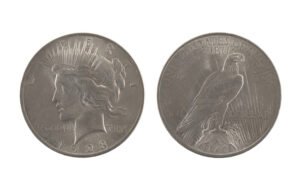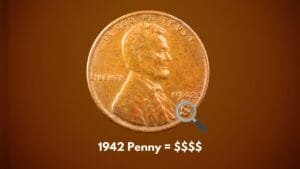When it comes to coin collecting, the 1965 Roosevelt Dime holds a special place among coin buyers. Why? Well, it’s the first dime made of copper-nickel clad after the silver era came to an end, making it the first of its kind!
But that’s not it! The 1965 dime is also packed with interesting minting errors and variations that can hike its value from a few cents to a whopping $12,000 or more! In this article, I’ll explain all the valuable features of a 1965 Roosevelt Dime, from its grades to SMS variety, that could turn your dime into big bucks!
Brief History of the 1965 Roosevelt Dime
First introduced in 1946 to honor President Franklin D. Roosevelt, the Roosevelt Dime underwent a significant change in 1965. This year marked a pivotal moment in U.S. coinage as it transitioned from silver to clad composition for dimes and quarters after the Coinage Act of 1965, signed by President Lyndon B. Johnson to cope with rising silver prices.
The U.S. Mint produced large quantities of these new clad dimes in 1965 to replace the silver dime in circulation, making them a popular and collectible coin in history.
| 1965 Roosevelt Dime | Key Facts |
| Coin Composition | 91.67% copper, 8.33% nickel |
| Minting Location | Philadelphia, Denver, San Francisco |
| Year of Minting | 1965 |
| Weight | 2.268 g |
| Diameter | 17.91 mm (0.705 in) |
| Thickness | 1.35 mm (0.053 in) |
| Designer | John R. Sinnock |
| Face Value | $0.10 (10 cents) |
| Mint Marks | No Mint Marks |
| Total Mintage | 1,652,140,570 coins |
Identifying a 1965 Roosevelt Dime Design & Composition
To find a real 1965 Roosevelt Dime in a huge lot of old coins, you must identify its design elements on both sides and its physical characteristics.
1965 Roosevelt Dime Obverse:

- Portrait of Franklin D. Roosevelt facing left
- The word “LIBERTY” along the left edge
- The “IN GOD WE TRUST” motto to the left of Roosevelt
- Date “1965” below Roosevelt’s neck
- The designer’s initials “JS” at the base of Roosevelt’s neck
1965 Roosevelt Dime Reverse:

- Torch in the center, flanked by an olive branch and an oak branch
- “UNITED STATES OF AMERICA” along the top edge
- “ONE DIME” below the torch
- “E PLURIBUS UNUM” motto to the right of the torch
Coin Composition and Dimensions:
The 1965 Roosevelt Dime marked the transition to a new composition. It consists of an outer layer of 75% copper and 25% nickel bonded to a pure copper core, giving the coin a total composition of 91.67% copper and 8.33% nickel.
This new clad composition made the coin look like its silver predecessors while being more cost-effective. The change in composition also made 1965 dimes slightly lighter than their silver dimes, with a new weight of 2.268 grams.
As of its size, the 1965 dime has a diameter of 17.91 mm (0.705 inches) and a thickness of 1.35 mm (0.053 inches) with a reeded edge composed of 118 reeds.
How to Find the 1965 Roosevelt Dime Value (4 Key Factors)
The average value of a 1965 Roosevelt Dime in circulated condition is around its face value of ten cents. But special coins with rare features or uncirculated ones can range from $10 to several hundred or a few thousand dollars.
Now, let’s understand what characteristics and factors determine a 1965 dime coin’s worth!
1. Coin Grading and Condition
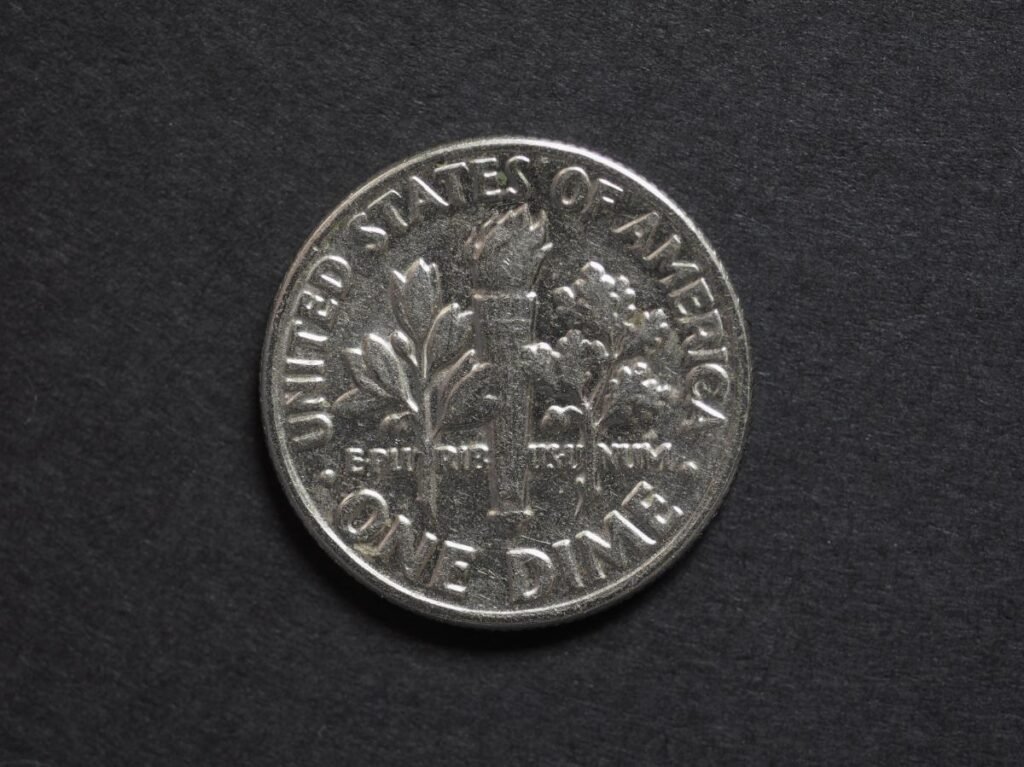
The condition of a 1965 Roosevelt Dime is the most important factor that directly impacts its value. Naturally, the better the coin, the higher the value. This means that 1965 dimes, new-like (mint) condition, are worth the most, while average or poor-condition dimes are worth the face value.
While you can assess your 1965 dime’s condition yourself based on the sharpness of raised designs, professional grading services use a scale from 1 to 70, with MS70 being a perfect, flawless coin. 1965 Roosevelt Dimes graded MS-68 (Mint State 68) or higher can easily fetch $300 to $800 or more!
I’ve curated a 1965 Dime value chart to find the average value of your 10-cent coin.
| Coin Grades | Condition Details | 1965 No Mint Mark Dime Value |
| Poor (0) to Extremely Fine (XF45) | Significant wear, faded but visible details | Face Value |
| Almost Uncirculated (AU50) to Mint State (MS60) | Slight wear on highest points, visible marks or blemishes | Significant wear faded but visible details |
| Mint State (MS61 – MS64) | Uncirculated with minimal wear | $3 – $10 |
| Mint State (MS65 – MS66+) | Nearly flawless with very minor imperfections | $5 – $45 |
| Mint State (MS67 – MS67+) | Well-preserved with no major flaws | $50 – $140 |
| Mint State (MS68 or Above) | Nearly perfect, luster, no major marks or flaws | $300 – $800+ |
2. Mint Marks & Mintage
The mintage of a coin, which directly impacts its rarity, is another crucial factor in assessing the 1965 dime’s value. Now, the total mintage for the 1965 Roosevelt Dimes was 1,652,960,000, making this coin quite common.
Unlike previous years, all 1965 dimes were minted without mint marks to discourage hoarding. Production was spread across three mints: Philadelphia, Denver, and San Francisco.
Although the exact mintage is unknown, the Philadelphia Mint produced the majority of 1965 dime coins, while the San Francisco Mint struck the fewest coins.
3. 1965 SMS Dime (Special Strike)
Apart from the regular dimes, the United States Mint also released 2,360,000 Special Mint Set 1965 dimes for collectors. These coins were struck using a special die, giving them a higher-quality finish with sharp details and reflective surfaces.
Generally, SMS dimes are valued more than regular dimes. In uncirculated condition, a 1965 SMS dime can be worth around $5 to $10. However, higher-grade examples (like SP67/MS67 or above) can command prices of $25 to $400 or more. I found this MS69 1965 SMS 10C coin that sold for almost $340 on eBay!
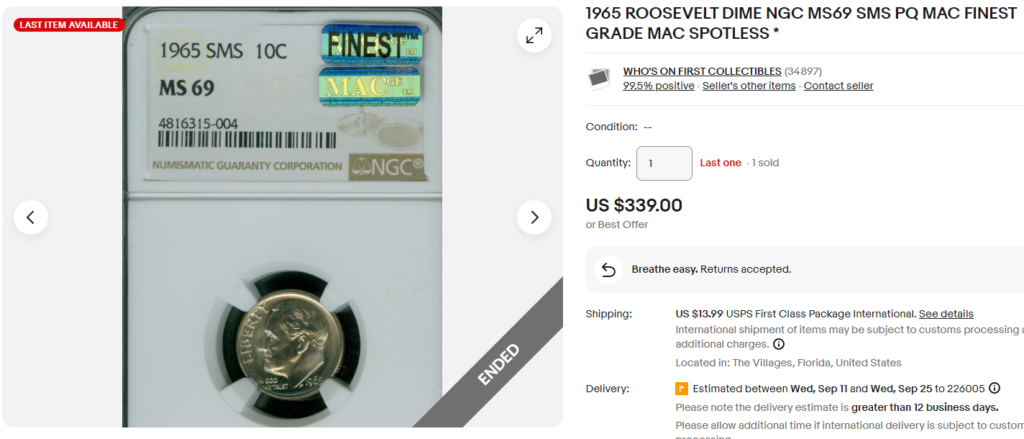
4. Rare Mint Errors & Varieties on 1965 Roosevelt Dime
Flaws that occur during the coin’s minting process can significantly increase its value. For the 1965 Roosevelt Dime, look for the following notable errors:
Transitional Error (Silver Planchet)
This is an extremely rare mint error in which a 1965 dime was struck on a 90% silver planchet instead of the clad planchet. This rare dime can be worth $5,000 to $15,000 or more like this AU58-graded 1965 10C coin struck on a 90% silver planchet that sold for $12,600 on Heritage Auctions.
Broadstruck Error
This error happens when the 1965 Roosevelt Dime coin is struck outside the collar, resulting in a wider, thinner coin with no reeded edge. These can be worth $50-$200, like this MS65 example that a collector bought for almost $60 on Heritage Auctions.
Missing Clad Layer
The missing clad layer error in the 1965 Roosevelt Dime occurs when a coin is struck without the outer copper-nickel clad layer that covers the copper center. You can easily spot this error by the color difference; one part will be shiny and silver-like, while the other part will be a reddish hue.
Depending on the coin’s condition, the 1965 dimes with missing clad layer can command prices of up to $90 or more, like this AU58 example that sold for $114 on eBay.

Two-Piece Bonded Pair
This is an extremely rare mint error that results when two 1965 dime planchets (blanks) are inadvertently bonded together during the striking process. Generally, the first coin is deformed, while the second one has a crooked design due to the first coin. A rare MS65 example of this error coin was sold on Heritage Auctions for over $2,000!
Die Break/Cud
Die breaks and cuds occur when part of the die breaks off, creating a raised area, bump, or cud on the 1965 dime coin. While most uncirculated 1965 dimes with minor die breaks are worth $20 – $50, a rare coin with a major (50%) obverse die break sold for a stunning price of $1,440 in a coin auction.
1965 Roosevelt Dime Full Band Variety
The Full Bands designation (FB) is assigned to Roosevelt Dimes, which exhibits the full separation and clarity of the horizontal bands on the torch. This detail can significantly affect the coin’s value; a 1965 dime-graded MS68 FB can sell for around $1,000 to $4,000, like this one that won a high auction price of $3,818 on Heritage Auctions!
4 Simple Steps to a 1965 Roosevelt Dime Counterfeit
Can’t determine whether your 1965 dime coin is genuine or a counterfeit? Follow these four simple steps:
- Check the Weight: If your 1965 Roosevelt Dime weighs more or less than the coin’s specific weight of 2.268 grams, it could be fake.
- Verify the Composition: Use a magnet to ensure the coin isn’t attracted. If it is, it might have a foreign composition, unlike genuine coins.
- Double-check the Dimensions: Use a precise scale to measure your dime’s diameter and thickness. Any deviation from the specific measurements means the coin is fake.
- Examine the Edge: The edge of the 1965 dime should be reeded and uniform. If you notice a plain edge or a broken edge, it hints at a counterfeit.
These easy steps can help you distinguish between real and fake 1965 dimes. But if you’re still in doubt, contact a professional numismatist or grading service.
In conclusion, the 1965 Roosevelt Dimes can be worth a fortune despite being a deviation from the previous silver composition. So, before you buy or sell a 1965 dime, observe all its rare characteristics and assess its true value using the price guide!
Like this dime, the 1976 half dollar, the 1976 quarter dollar, and the 1889 Morgan dollar are other highly collectible coins you must look out for. I have shared detailed value guides to discover the actual worth of each of these old coins!
Note: This article is intended for informational, educational, and entertainment purposes only. Some images are illustrative and may not represent actual brands, products, or related entities. All trademarks, product names, brand logos, packaging, and other intellectual property referenced remain the exclusive property of their respective owners. Any brand mentions or references are provided solely for descriptive and educational context and do not imply any formal or commercial association.





